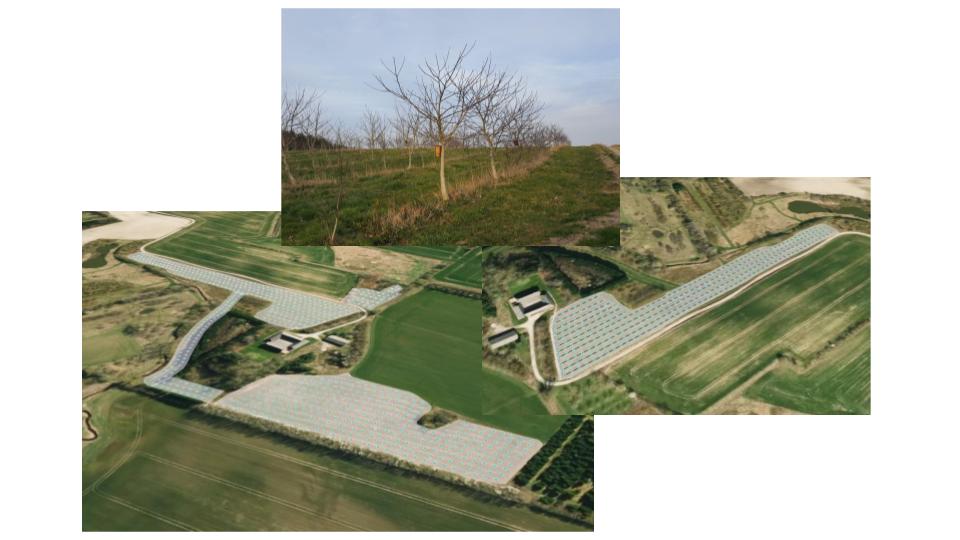
Case Specifications
Climate: Cold Temperate
Agroforestry System Type: Silvopasture / Orchard Grazing
Main outputs: Walnuts, Apples, Wool, Meat
Intervention/transition: A. Orchard grazing and B. trees on pasture
Description: Setting up digital twin with RegenWorks Grow to optimize existing agroforestry production and design of new agroforestry system based on analysis of existing production optimized for 30 year investment period.
This case study illustrates how our management and analytics solution can be used in combination with our project development offerings to build on existing system and data to find the most optimal solution for both existing and establishment of new agroforestry systems.
Setting up analytics software for existing orchard
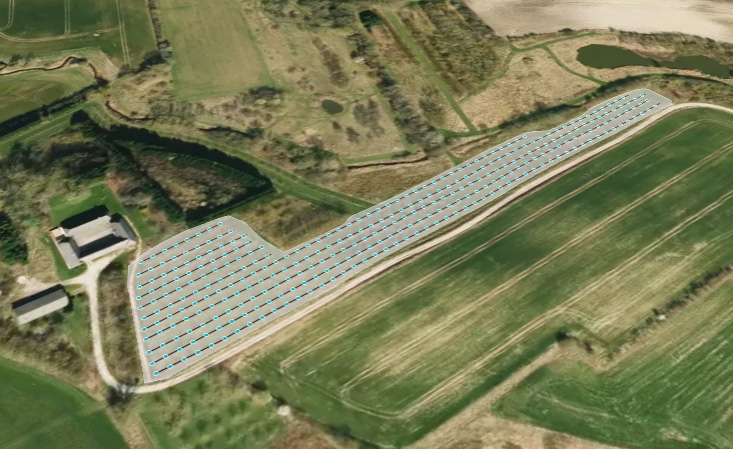
Set up digital twin and baseline data
Through the RegenWorks platform we set up a digital twin of the existing orchard. The digital twin consist of georeferenced information about individual trees, their history, age, elevation, variety and performance. In this process trees are also organized in rows/blocks to better manage data streams and compare data on different scales.
In addition to the trees, individual sub-areas on each block were also defined to better analyze pasture and soil improvements.
Integrating data streams for real-time digital twin
With the initial data structure based on actual georeferenced trees and sub-areas set up, next step was to integrate continuous data streams to analyze and optimize the existing system. It often makes sense to do a custom evaluation of which data streams makes sense to integrate on the individual enterprise to keep things simple and only gather data that can create actual value. In this project the following data streams were integrated:
- Yield and growth log on tree basis (Productivity and carbon sequestration)
- Management log on tree and area basis (Costs and labor requirements)
- Annual soil samples (Soil health and carbon stock)
- Bird box usage (Bird habitat and biodiversity)
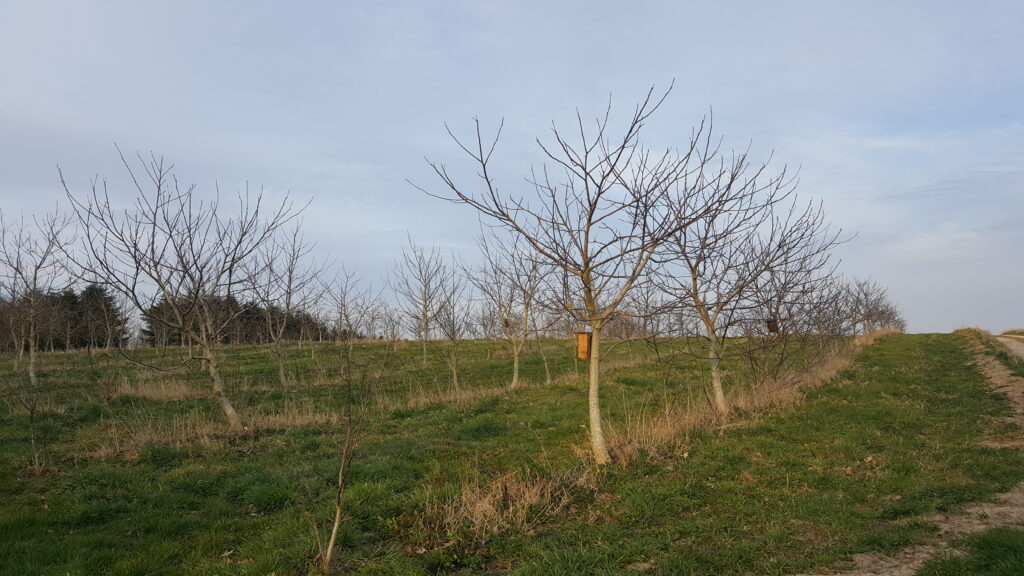
Analysis and optimization of existing production
Based on initial historic data and Regen Farmers expert insights, interventions that could improve ecological and financial performance of the existing operations were identified.
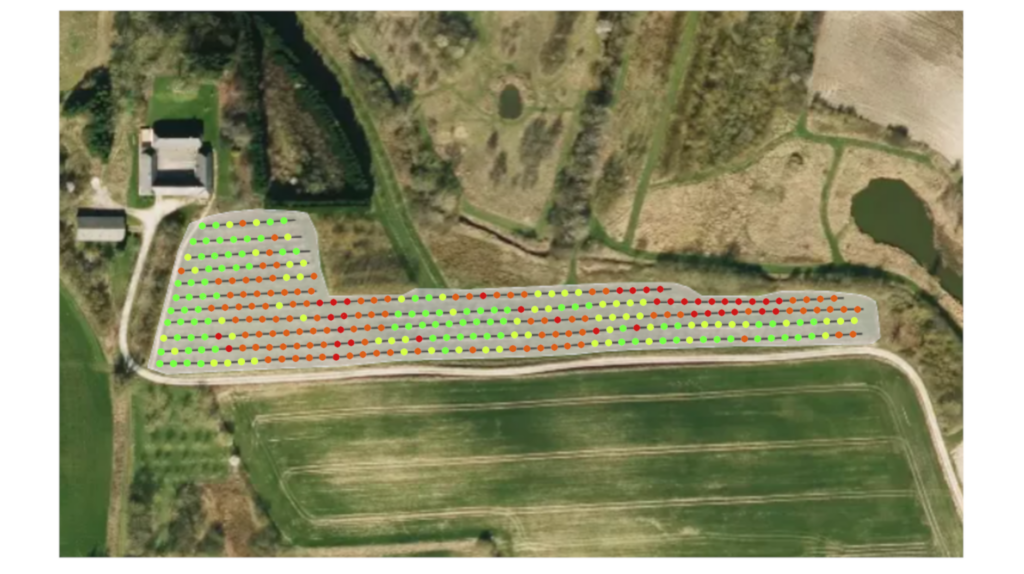
Tree growth, water infiltration, soil health and carbon stock
Historic data showed that growth of trees varied quite dramatically across the orchard, with a factor of about 5 between lowest performing and highest performing areas, indicating a huge potential for optimization. By cross-referencing tree growth with slope/elevation, it became clear that water does not infiltrate well in the soil, making it run off. This was further supported by a compaction soil test.
A series of interventions were done to optimize water capacity and water infiltration, such as keyline plowing and a new cover crop mix.
Soil tests further showed a low SOC across all areas. Sheep were introduced into the orchard in a planned grazing scheme with mobile fences and improved forage integrated in the new cover crop mix. Overall the aim of this was to increase soil health and SOC. Adding animals also helped to reduce cost from mowing and created an additional income stream.
- Expected financial outcome of interventions: Increased productivity, additional income stream, reduced operational costs.
- Expected ecological outcome of interventions: Improved tree vigor, increased carbon sequestration, reduced soil erosion.
Tree crop yields, pollination, insects and bird habitat
Data on walnut yields from the existing orchard also showed large differences in performance. Correlation with tree growth was high, but also areas with little wind showed lower yields?
Walnuts are wind pollinated, but insects like solitary bees can improve pollination as they can help to release pollen from flowers into the wind. Select solitary bee nests were placed strategically in the orchard to improve pollination.
Data from Bird boxes showed low nesting rate. This could indicate low natural insect population in the area. To improve both natural insect population and support solitary bees in nests, insect friendly perennial plants were added to the new cover crop mix to ensure feed throughout the whole season. This seasonal insect feed plan was also aligned with rotation of sheep to ensure flowers are not moved in times were pollinators are in big need of food.
- Expected financial outcome: Increased productivity through improved pollination.
- Expected ecological outcome: Increase in bird nesting rate, increase in insect population
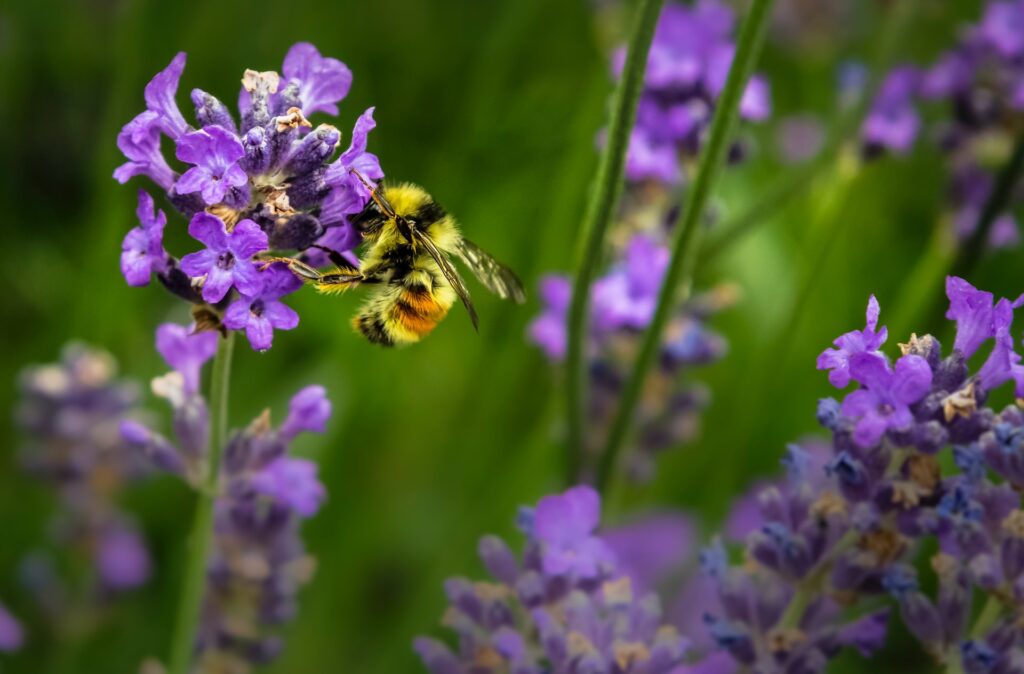
Development of new area based on learnings from existing production

Design of new agroforestry system
New agroforestry system design that incorporates apple trees between walnuts for increased short-and medium-term cash-flow. Additionally spacing increased from 6 m to 9 m as it was found optimal based on a 30 year financial analysis of all three components: grazing, walnuts and apples. Sheep are rotated into the new system in mobile fences.
Layout of new production system
Layout of the new system were done to avoid the predominant issues in the existing production like water logging and dry areas. The most optimal orientation of the system was a simple North-south orientation that also fit the slope of the terrain well for optimal water infiltration.
Both solitary bee habitats, honey bee hives and bird nests were also integrated on the new area. A similar cover crop mix to the one applied on the existing production areas were also established on the new area.
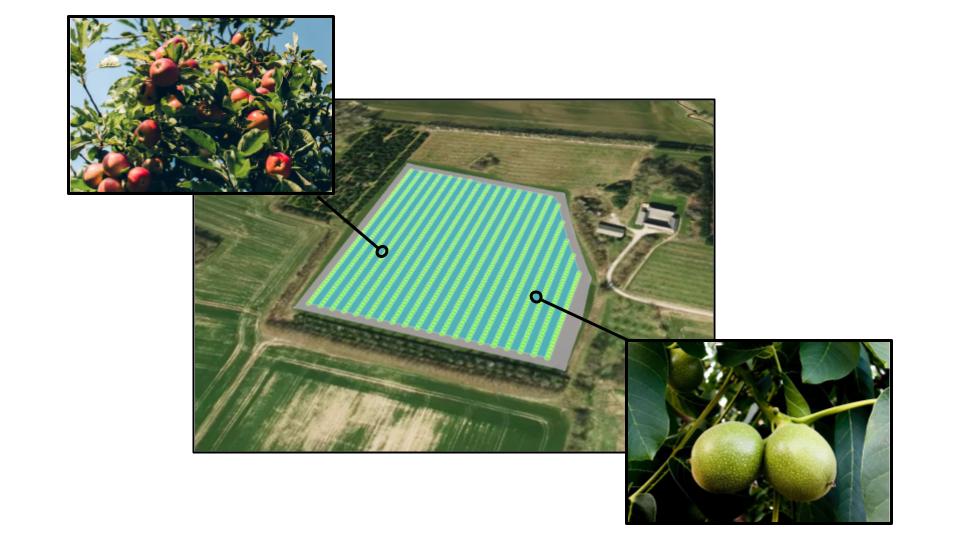
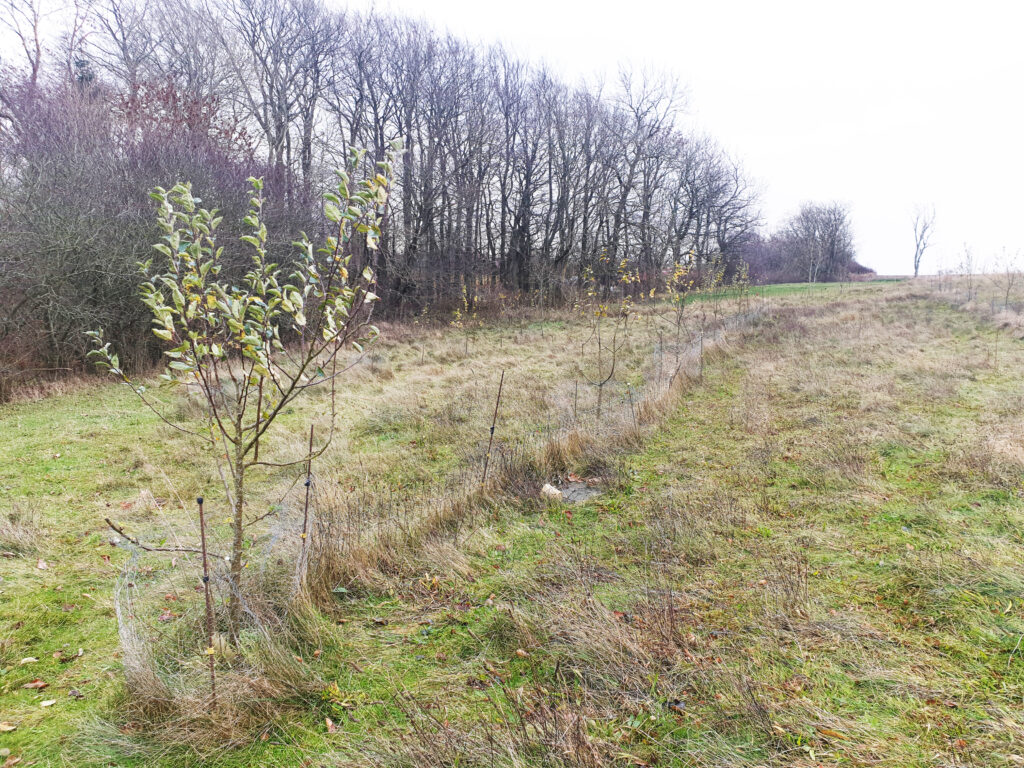
Establishment of new agroforestry system
Before tree lines were established, keyline plowing were used to improve water infiltration in the soil. Trees were established together with the farmer based on georeferenced layout from the RegenWorks software.
Though sheep will be kept contained within mobile fences, trees are still subject to wild animals, so tree guards were established around the young trees. Mulch were applied around the base of the trees to reduce weed competition.